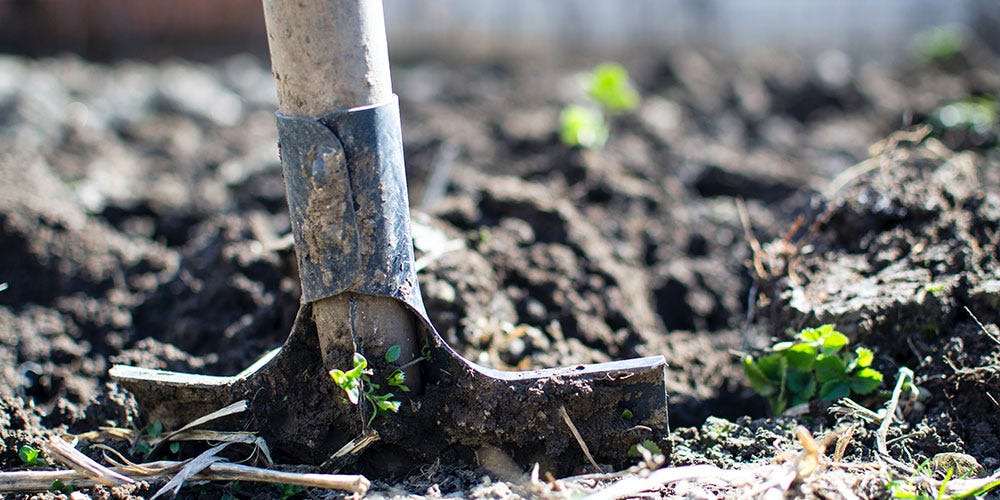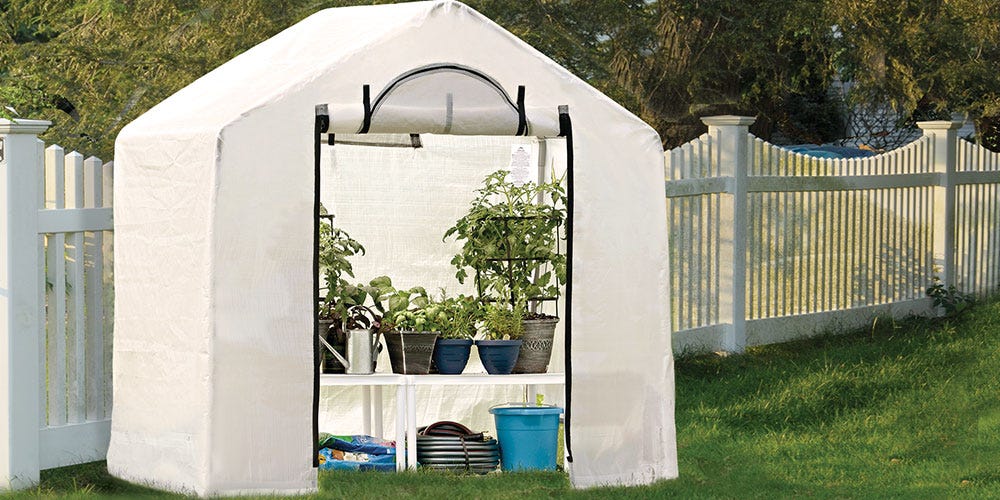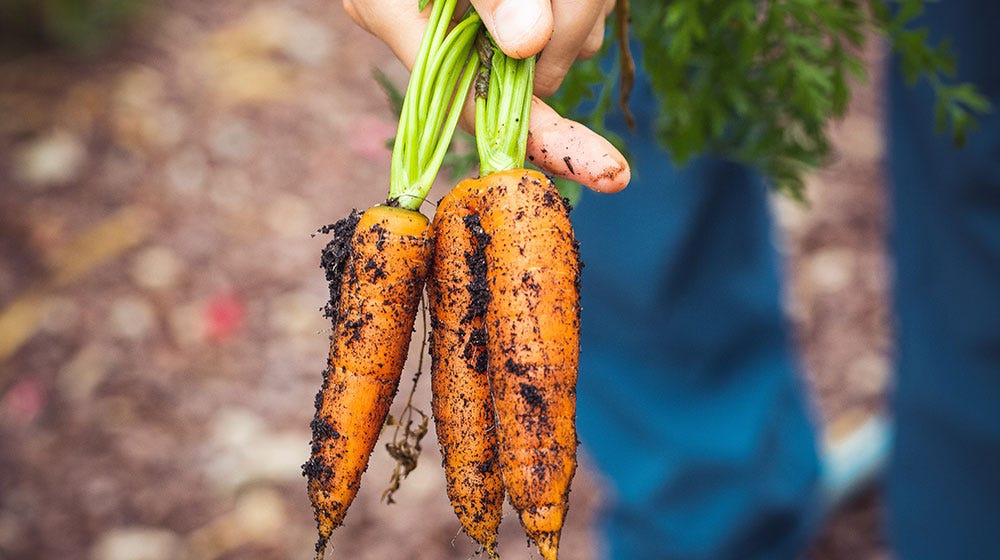Did you know that fall is a great time to grow vegetables? With all the talk about spring being a good planting season, it’s easy to forget that the late summer and early fall is also a prime time to plant another set of well-loved crops. This is the time when delicious vegetables like turnips and broccoli are in season and taste their freshest. After you harvest your spring crops in the summer, it's time to prepare another wave of delicious homegrown fall vegetables. Planning more crops at this time ensures that you get a steady harvest of healthy vegetables well into winter.
This article will discuss fall planting. You’ll learn how to clean up your garden to prepare for fall gardening, what vegetables to plant, how to clean your garden for the fall, and how to use a greenhouse to extend the growing season. With the help of ShelterLogic greenhouses and other outdoor living essentials, you can prepare your garden for a bountiful autumn harvest every year.
What Fall Vegetables Can I Grow?
What can you grow in the fall and winter? Apparently, quite a bit! Some of the best-loved vegetables are sowed at the end of summer and beginning of all, like winter cabbage and carrots. Overall, the average fall planting temperature is when the days are in the low 70s and nights average 40 to 50 degrees Fahrenheit. Whenever this temperature range falls for your area, start planting. Here is a list of fall crops you can grow after you harvest your first round of spring and summer veggies.
- 3-4 months before the first frost: Plant broccoli, turnips, cauliflower, lettuce, radishes, and rutabagas directly in your outdoor garden.
- 2.5-3 months before the first frost: Plant beets, beans, green onions, carrots, and chard. You may also plant another round of lettuce and radishes.
- 2-2.5 months before the first frost: Plant spinach, arugula, turnips, winter radishes, and mustard. You may also plant another round of lettuce.
- 1.5- 2 months before the first frost: Plant Brussels sprouts, another round of spinach, and some winter radishes.
- At the first frost: Plant garlic, onions, and shallots to keep your winter garden full of delicious aromatics.
These are just samples of what you can grow in your garden in the late summer and into the winter. For more information, check with your local gardening shop to find out what seeds they recommend.
By following the growing directions on your seed packages, you can choose a proper spot outdoors without problems. You can also extend your outdoor growing time by using a greenhouse with other garden products. This is especially useful if you live in a place that gets cold quickly.


How to Clean up Your Garden
To prepare for planting fall vegetables, you must first clean your garden and nourish the soil. You may then choose to winterize your garden or plant fall crops, with a greenhouse on standby to extend your growing time.
Remove Old Plants and Weeds
This first step is applicable whether you want to plant more vegetables or winterize your garden. Before the ground gets cold and hard, the soil is easier to work with than in the early spring. Dig out the roots of weeds that can cause problems like Bermuda grass. Any remains of old spring plants that you have harvested also should be removed. Now, your soil is ready for tilling and fertilization.
Till and Fertilize The Soil
Spring and summer vegetables absorb many nutrients from the soil, so it’s important to replenish your garden bed with fertilizer before planting more seeds. Tilling the soil first opens up the soil to make it more hospitable to plants. With better drainage, more oxygen, and more “room” in the soil, your fall crops are more likely to thrive. If you have a small garden plot, you should use a manual tiller to not harm any adjacent plants that are still growing. With large plots, a machine tiller will save you time and stress.
After this process is complete, apply the recommended fertilizer for your desired crops. This may be a store-bought fertilizer or homemade compost. For the best results, consult your seed packages to find out what nourishment your plant needs.
Add The Seeds
For many fall plants, the seed packages recommend a direct sow, meaning that you plant the seeds into the garden. However, if you want to give certain plants a head start, there is nothing wrong with starting some seeds indoors to later transplant into the garden. This is an option for gardeners who feel wary about cold overnight temperatures and their effect on young seedlings. To stabilize temperatures, you may also opt for placing a greenhouse cover over your raised bed or install a large greenhouse over your entire garden.
Use Taller Plants for Shade
Want to plant some fall crops early? Shade from taller plants can allow you to grow plants suited for colder temperatures sooner. Use the shade from climbing plants like tomatoes and sunflowers to keep certain spots cool enough to grow temperature-sensitive crops like broccoli and cauliflower, which favor moderate temperatures but can’t handle frost.
This will ensure that they mature before the first frost. Your taller summer plants will naturally be harvested right when the weather is cool enough for your sensitive fall crops to handle the days in full sun. Need extra shade? Hang a sunshade over a section of your garden to protect your crops from overheating.


How to Use a Greenhouse for Fall Planting
Greenhouses make it possible to grow food throughout the year. Modern life depends on these structures to supply fresh food even when they aren't theoretically in season. Depending on where you live or what type of garden you have, the type of greenhouse you get may differ.
For instance, when you already have a raised garden bed, you can install a greenhouse over it to protect your fall vegetables against the cold. Or, you may need a large greenhouse to cover a large in-ground garden. However, no matter what kind of product you choose, the overall goal is to protect your plants from frost and guard germinating seeds against extreme temperatures and pests.
When to Install a Greenhouse
Generally, the interior of a greenhouse can stay 30 degrees above the exterior temperature. This means that you shouldn’t start fully covering your plants until the nights get colder. In the early fall, you may also open the covers of your greenhouses completely during the day and only need to close them at night. Overall, your goal is to reach the average ideal greenhouse temperature of 80 to 85 degrees.
Many factors determine your greenhouse's internal temperature. These include your cover’s material type, the temperature outside, type of ventilation, and any presence of snow cover. With all these factors considered, there is no universal time to install a greenhouse. You’ll have to consider your area’s unique characteristics and start to use your greenhouse when conditions are right.
Greenhouses over Garden Beds
When you have an existing garden bed, you don’t have to winterize it when you install a raised bed round greenhouse over it. Its fabric cover acts as a thermal barrier, allowing in diffused light while at the same time preventing overheating by reducing the amount of UV ray exposure. This means that you need fewer ventilation accessories and don’t need to water your plants as frequently.
Whether you need to start seeds or extend the growing season into fall and winter, you can pop this shelter over your raised bed to protect your seeds and fall plants from cold nights. When you need more airflow or to cool things down during the day, raise the roll-up cover, which stays open with tension ropes.
Find Greenhouses for Fall Planting at Shelterlogic
Growing fall planting vegetables is easier when you have more control over its surrounding conditions. Greenhouses allow you to stabilize temperatures and prolong the fall growing season, protecting more sensitive crops like broccoli and cauliflower. Find all the gardening essentials and storage needs your garden requires to produce delicious vegetables throughout the year.

